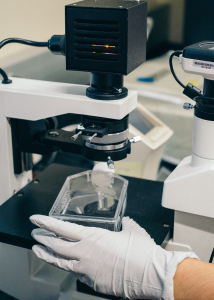Following up on the measurements of antibody responses following multiple vaccines in the VITAL vaccination study, the team in work package 2 explored biomarkers for vaccine responsiveness.
Firstly, the previously identified immunotypes (individuals with a similar immune state)(Cevirgel Aging Cell 2022) were associated with vaccine responses. Interestingly, specific immunotypes associated with a weak or robust antibody response to the influenza vaccine (Cevirgel Aging Cell 2024). Even more, certain immunotypes were also associated with low and high overall antibody responsiveness following the three different vaccines. This suggests that immunotypes may be used to identify individuals with predicted high or low responses to vaccination.
Immune entropy
Following up on this finding, we developed a single biomarker, immune entropy, to capture perturbation in immune cell phenotypes as compared to a reference group of young individuals. Immune entropy was highly associated with immune responsiveness following 3 vaccines, and its predictive value was validated in two independent SARS-CoV2 vaccination cohorts consisting of older individuals as well as kidney transplant recipients . Hence, using this novel marker we can identify individuals at risk for low vaccine responsiveness.
Transcriptome analysis
Finally, the first transcriptome analysis, using investigation of so called blood transcriptome modules (BTMs), were performed. These analysis aim to identify additional predictive biomarkers for vaccine response as well as enhance our mechanistic understanding of the immune responses induced.
These analyses reveal a strong innate immune response 1 day after influenza vaccination, whereas an inflammation-associated response was observed after pneumococcal conjugate vaccination. Both these signals were enhanced in young adults as compared to the middle-aged and older adults. Moreover, stronger transcriptome-based responses were observed in participants with a high vaccine response. Additional differential gene analysis of the major contributors suggest that older adults and low vaccine responders up/downregulated a similar gene signature as either younger adults and high vaccine responders, but to a lower extend. This holds high promise to boost vaccine responses in the older adult population.




